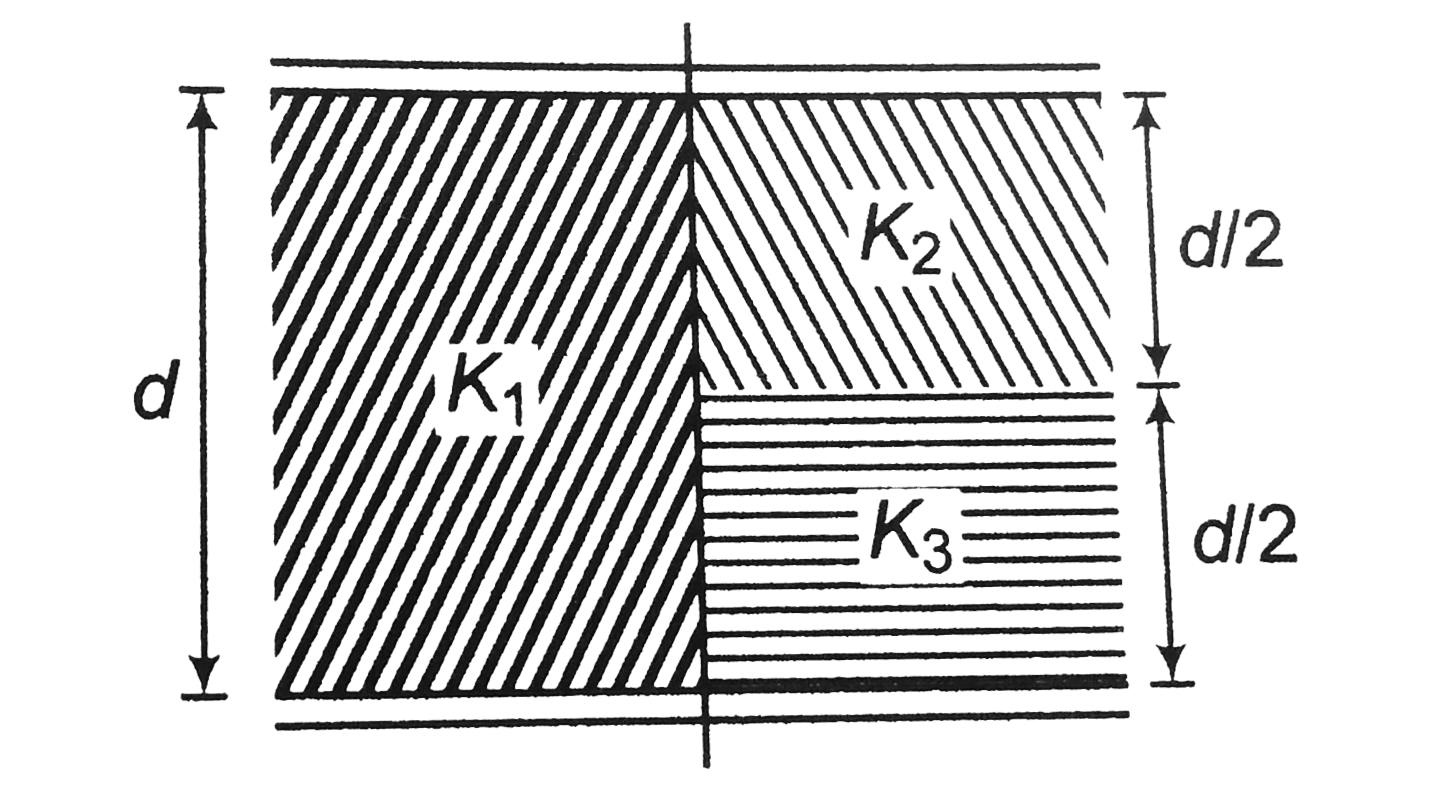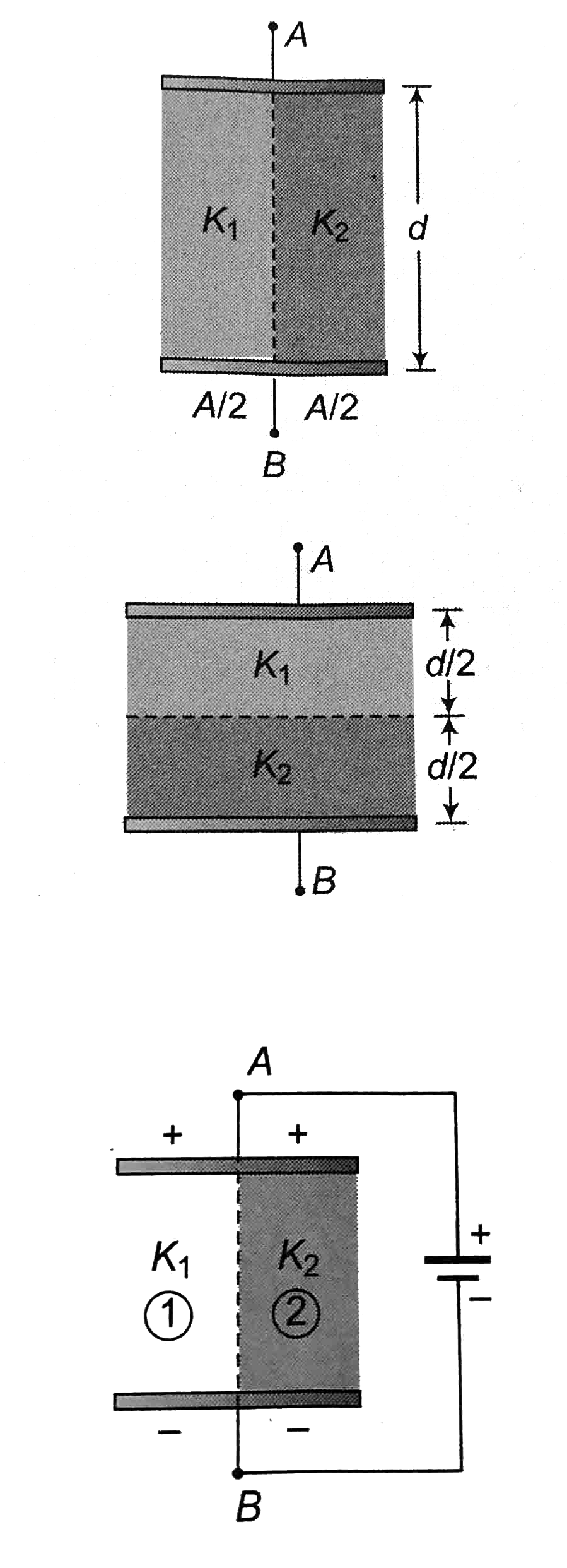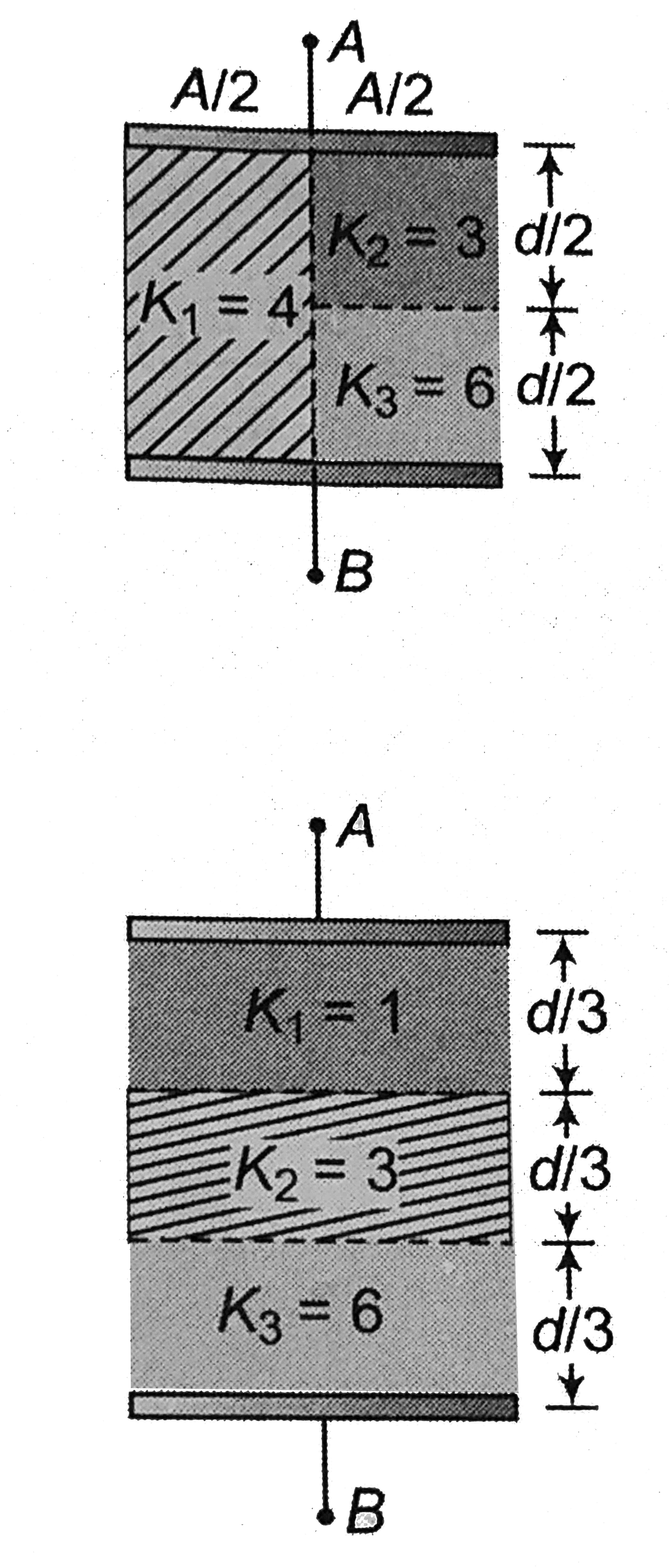The equivalent capacitance between P and Q in the figure is (area of each plate is A and separation between two consecutive plates is d)

Aε02d
3Aε02d
2Aε0d
53Aε0d
The correct Answer is:D
Topper's Solved these Questions
- PHYSICS PART2BOOK - FIITJEECHAPTER - PHYSICS PART2EXERCISE - Section (I) : Subjective
4 Videos
- PHYSICS PART2BOOK - FIITJEECHAPTER - PHYSICS PART2EXERCISE - Section (II) : MCQ
27 Videos
- PHYSICS PART-IIIBOOK - FIITJEECHAPTER - PHYSICS PART-IIIEXERCISE - NUMERICAL BASED QUESTIONS DECIMAL TYPE
11 Videos
- ROTATIONAL MECHANICSBOOK - FIITJEECHAPTER - ROTATIONAL MECHANICSEXERCISE - COMPREHENSION - IV
2 Videos
Similar Questions
Knowledge Check
The equivalent capacitance of the arrangement shown in figure, if A is the area of each plate is
 AC=ε0Ad[K12+K2+K3K2K3]BC=ε0Ad[K12+K2K3K2+K3]CC=ε0A2d[K1+K2+K3K2+K3]DC=ε0Ad[K1+K2K3K2+K3]
AC=ε0Ad[K12+K2+K3K2K3]BC=ε0Ad[K12+K2K3K2+K3]CC=ε0A2d[K1+K2+K3K2+K3]DC=ε0Ad[K1+K2K3K2+K3]
Find the equivalent capacitance between A and B.A: area of each plate, d: separation between the plates.

View SolutionFind the equivalent capacitance between A and B.A: area of each plate, d: separation between the plates.

View SolutionFind the equivalent capacitance between A and B.A: area of each plate, d: separation between the plates.

View SolutionFind out equivalent capacitance between A and B. (take each plate Area = A and distance between two conjugative plates is d)

View SolutionFind out equivalent capacitance between A and B. (take each plate Area = A and distance between two conjugative plates is d)

View SolutionThe equivalent capacitance of the arrangement shown in figure, if A is the area of each plate is

View SolutionThe equivalent capacitance between A and B is neo A/d. Take plate area as A and separation between the plates as d. Find n. A. .B
View Solution

